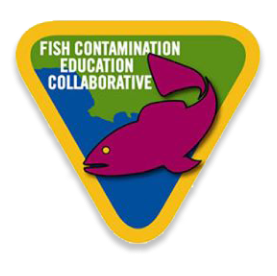Go Fish: DNA Barcoding Takes the Guesswork out of Seafood
How many different types of fish would you be able to identify in a blind taste test? While it may sound like an episode of Man V. Food, this culinary challenge is actually a serious financial and health concern for the FDA, restaurateurs and you!
Once a catch has been cut, processed, cooked and served, it can be difficult for even the most trained eye—and sometimes palette—to be able to identify the species. For some unscrupulous marketplace sellers this can lead to “seafood substitution,” where one type of fish, usually of poorer quality, is mislabeled and sold as a premium product. This practice, a violation of federal law, not only cheats buyers and diners out of the product they are expecting but can also expose them to toxins found in lower grade fish species. In an even sadder turn, endangered species can be passed off as commercial catches.
 To face this seafood mislabeling issue, The Barcode of Life has developed a new technology, officially approved by the FDA this Fall, that is able to scan a fish protein and identify it by comparing short strings of DNA just like a grocery store checkout scanner reads a barcode! Since 2003, The Barcode of Life, has built up a DNA database of more than 167,000 species and hopes to have 5 million cataloged by 2015. This technology could be used to identify 500,000 species and prevent mislabeling. That means when your date orders the lobster, you won’t be paying for monkfish, or even worse, buying monkfish and actually eating toxic pufferfish which caused several people to become sick in 2007. Since seafood is one of the most highly traded commodities in the world, there is a big movement to make the DNA barcoding of seafood a standard industry practice. The more widely applied this technology becomes consumers can enjoy their fish without wondering what that fish actually is.
To face this seafood mislabeling issue, The Barcode of Life has developed a new technology, officially approved by the FDA this Fall, that is able to scan a fish protein and identify it by comparing short strings of DNA just like a grocery store checkout scanner reads a barcode! Since 2003, The Barcode of Life, has built up a DNA database of more than 167,000 species and hopes to have 5 million cataloged by 2015. This technology could be used to identify 500,000 species and prevent mislabeling. That means when your date orders the lobster, you won’t be paying for monkfish, or even worse, buying monkfish and actually eating toxic pufferfish which caused several people to become sick in 2007. Since seafood is one of the most highly traded commodities in the world, there is a big movement to make the DNA barcoding of seafood a standard industry practice. The more widely applied this technology becomes consumers can enjoy their fish without wondering what that fish actually is.
Have you ever had a seafood experience that was a bit too fishy for your taste? If you have, tell us about it and let others know about this issue!
*Photo courtesy of Greenpeace.

